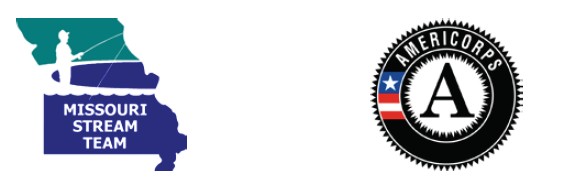
photo by botanist, Jack Harris, WGNSS
On March 1st and March 13th, ST 2991 hosted a terrestrial snail survey at the La Barque Conservation Area with members of the MDC Master Naturalist program, The Webster Groves Nature Study Society and local residents. 15 volunteers participated.
The survey has, thusfar, yielded identification of 25 known species of terrestrial snails and a number of bryophytes. Snail identification is being mastered by Ron Oesch (orange hat above), including miniscule specimens found in soil samples using a compound binocular microscope. Specimens range from 1.2mm to 17mm. For an interesting photo primer of Missouri snails see Larry Watrous's site at: http://www.lwatrous.com/missouri_mollusks/landsnails/photo1.htm
and for a taxonomic listing of Missouri mollusks with references & distribution database :
http://www.lwatrous.com/missouri_mollusks/
You can see the tabulated data collected thusfar including photos, and a calendar of future surveys at: http://www.labarque.org/index_files/page0028.htm
Spend some time looking around. This is an amazing website that focusses on La Barque Creek Watershed.
The survey will be ongoing until June, with the next survey collection scheduled for Saturday, March 29th from 9am to 3pm at the La Barque CA parking lot. They are requesting volunteers. Bring a lunch, a garden trowel, an old (large) pill bottle and clothes you can get down on the ground with. Or just come, its a great time.
Botanist, Nels Holmberg (tall greybeard in center above) is identifying the bryophytes and coordinating volunteers with Bill Coffing. Let them know if you're coming.

The result also included sightings of at least 3 white spotted, "western slimy" salamanders and 6 red back salamanders.

Plethodon albagula- western slimy salamander

Kingdom: Animalia
Phylum: Chordata
Subphylum: Vertebrata
Class: Amphibia
Order: Caudata
Family: Plethodontidae
Genus: Plethodon
Species: Plethodon cinereus
4 front toes, 5 hind toes. This one is in the "red-back" phase. The redback salamander is referred to as northern, southern or eastern; I suppose depending on what part of the country you hail from.
It appears that Amren UE has a tentative decision to costruct a new high voltage transmission line (now known as "the blue line" through the eastern part of the watershed. The plan will include a 100' clearcut buffer area that will crisscross the Hilda Young CA, crossing the existing high voltage line, and connecting the Eureka and Cedar Hill power stations. You can see a detailed photo map of the plan and other interesting details about this pristine watershed at http://www.labarque.org/ Mitigation plans for degradation of the watershed are referred to, but unknown at this time.





No comments:
Post a Comment